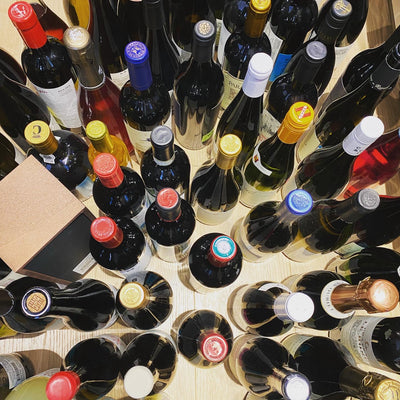Trediberri — The New School Is Old School
Jul 15, 2025
 In a region like Barolo, where tradition looms large and time moves slowly, it's rare for a new producer to burst onto the scene with the energy and impact of Trediberri. But since their first commercial vintage in 2011, that's exactly what they’ve done.
In a region like Barolo, where tradition looms large and time moves slowly, it's rare for a new producer to burst onto the scene with the energy and impact of Trediberri. But since their first commercial vintage in 2011, that's exactly what they’ve done.
A few years ago, at New York’s legendary Festa del Barolo, Trediberri unveiled their wines to the U.S. market—and the response was electric. By noon the next day, bottles had vanished from shelves across the city, with backorders stretching into the following year. For a young estate in a famously conservative region, this kind of immediate buzz is almost unheard of.
The story begins in 2007, when three partners—Nicola Oberto, his father Federico Oberto, and friend Vladimiro Rambaldi—purchased 5 hectares of vineyards in Berri, a historic cru perched on the far western edge of La Morra. Hence the name: Trediberri, or “Three from Berri.” Their first vintage was still a few years away, but the vision was already clear: produce wines of authenticity, precision, and soul.
Nicola, with his partner Stefania Drocco, is the heart and face of the estate. Young, vibrant, and deeply steeped in the world of great wines, Nicola brings a dynamic, thoughtful energy to everything he does—from farming to cellar work to writing the (often hilarious) back labels. His father, Federico, spent decades as cellar master at Renato Ratti, one of La Morra’s historic producers, and contributed both his deep well of experience and the family’s prized parcels in Rocche dell’Annunziata and Torriglione. Vladimiro, who splits his time between finance and wine, adds the business savvy to help steer the project wisely forward.
Rediscovering Berri
The Berri cru, long overlooked, had a winemaking history that dated back centuries—but much of it had fallen into neglect after World War II, when many rural families left for more lucrative city jobs. Trediberri saw potential where others saw obscurity. Berri sits at an ideal elevation and enjoys a cool, river-influenced microclimate, with soils composed of clay, sandstone, and limestone that offer the structure and tension Nebbiolo demands. The vineyard now forms the backbone of their Barolo Classico, blended with fruit from Torriglione, which adds perfume and lift.
And then there is Rocche dell’Annunziata—La Morra’s crown jewel, and Trediberri’s flagship bottling. Nicola often compares Rocche to Burgundy’s Chambolle-Musigny 1er Cru Les Amoureuses—a wine of sensuality, precision, and elegance.
Radical Traditionalism
What makes Trediberri especially exciting is not just what they do, but how they do it. In a village often associated with soft, supple Barolo, many producers leaned hard into modernization during the 1980s and ’90s, led by the so-called Barolo Boys—Elio Altare, Roberto Voerzio, and others—who embraced French oak barriques, shortened macerations, and a sleek, international style built for scores.
Trediberri, by contrast, is something of a radical traditionalist: long macerations (often 3+ weeks), native yeast fermentations in concrete, and aging in large, neutral botti grandi. In today’s La Morra, this old-school approach feels almost avant-garde.
That said, Nicola is quick to point out that “there are no recipes.” Decisions in the cellar are vintage-driven. Some years may include a bit of stem inclusion to add energy and dimension. The winery is equipped with a full arsenal—concrete, stainless, and wood—allowing maximum flexibility while maintaining a singular focus: transparency of site and balance in the glass.
Beyond Barolo
The Trediberri story doesn’t end with Barolo. Nicola and team are just as passionate about their Dolcetto, Barbera, and Langhe Nebbiolo, aiming to give these regional workhorses the same level of care and attention.
Their Dolcetto di Dogliani DOCG comes from 600-meter, old-vine parcels in Bastia Mondovì and Cigliè—a high-elevation zone perfectly suited to the grape’s naturally bright, juicy profile. The Barbera d’Alba comes from holdings in Torriglione and Roero, and the Langhe Nebbiolo is a blend of declassified young-vine Barolo and fruit from the Alta Langa, whose cool, alpine altitudes are increasingly important in a warming climate. These wines are generally fermented and aged in tank to preserve purity and freshness, without adornment.
Wines for the Table, Not the Pedestal
At the end of the day, Trediberri makes wines for people who drink wine—for joy, for pleasure, for sharing. On their website, there’s a section titled "Our idea of wine." In it, they remind us of a simple truth: that in a room full of famous bottles, the best wine is often the one that’s emptied first.
They aim to make that kind of wine—the one that speaks with clarity, drinks with ease, and leaves a memory in its wake. As they put it: “The best wine is always the most balanced, the one in which all components talk to each other in the most complete way.”
We couldn’t agree more.
Explore Trediberri Wines




